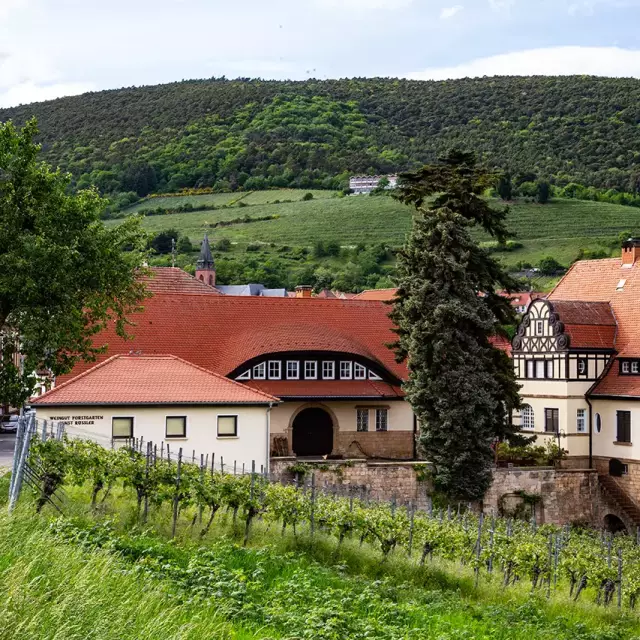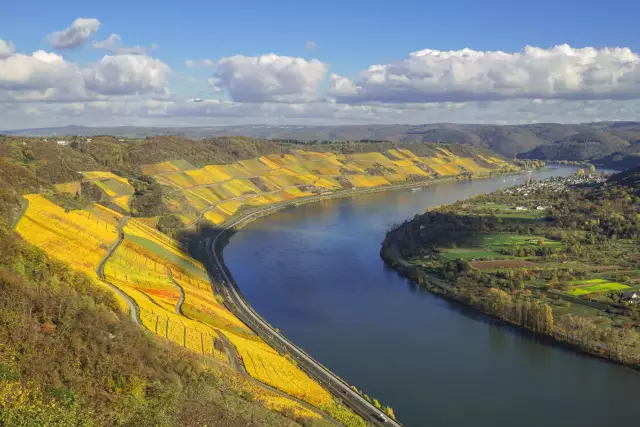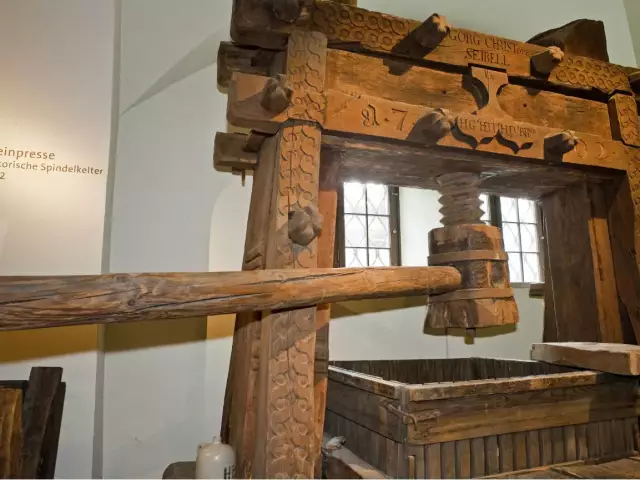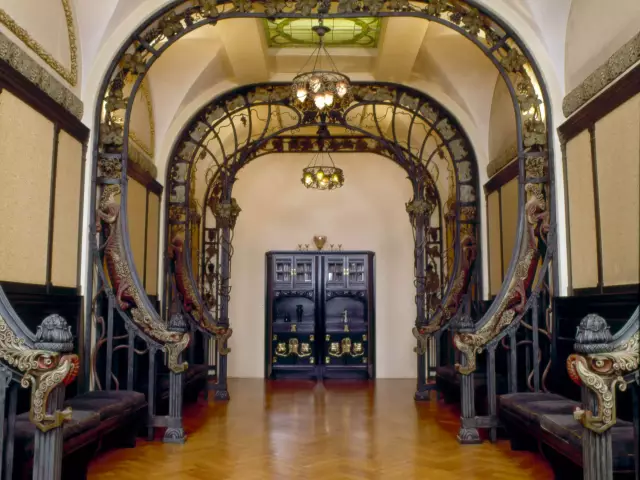St. Martin and Wingertsberg

All vineyards are alike, right? Of course, this does not apply to the grape varieties or the soil, but from the outside, vineyards look quite similar to each other. Vines stand next to vines, rows to rows. But in times of climate change, isn't it advisable to consider what a vineyard of the future might look like?
One possible answer is the Wingertsberg near St. Martin, or actually the Kirchberg site. You can recognise it from far away. The "Wingertsberg" lies below the Breitenberg in the Haardtrand-Wingertsberg nature reserve. It is a prime example of modern viticulture that also takes care of the landscape and nature. The terraced site, established in 2017 on an area formerly overgrown with bushes and shrubs, combines viticulture and nature conservation and is managed by eight winegrowers. All grapes on this steep slope are harvested by hand to produce high-quality wines. But the Wingertsberg is more than just rows of vines. Sand, rough grassland and sparse forest areas as well as orchards provide a varied and species-rich landscape. This is very favourable for biodiversity because many animals and plants find shelter and a habitat in these vineyards. Of course, the view over the Weinstrasse (wine route) and the Rhine plain is phenomenal. In the other direction looking up, the terraced vineyard undoubtedly enriches the townscape of St. Martin and attracts tourists and many other visitors. At the very top there is a hotel and a pergola, which provides a picturesque backdrop for the highest wine festival in the Palatinate: the "Wine Festival in the Pergola", organised by the St. Martin Winegrowers' Association. In fact, St. Martin is already a tourist magnet, as the charming historic centre has been a heritage-listed site since 1981. In other words, the citizens of St. Martin are very familiar with historical traditions. The Wingertsberg is the result of a land consolidation measure that was necessary to stop scrub encroachment and fallow land. As steep slopes are labour-intensive, many winegrowers prefer to grow their grapes on the flat plain. As a result, no one grew grapes on the Wingertsberg anymore until the land consolidation created the conditions for redesigning the steep slope. This is not only important in terms of biodiversity and appearance. In the case of the Wingertsberg, there is also the unique terroir, namely the red sandstone. This formation is only found on about 30 hectares in the Pfalz, less than one would think. And visitors are rewarded with a unique panoramic view over the Rhine plain.




